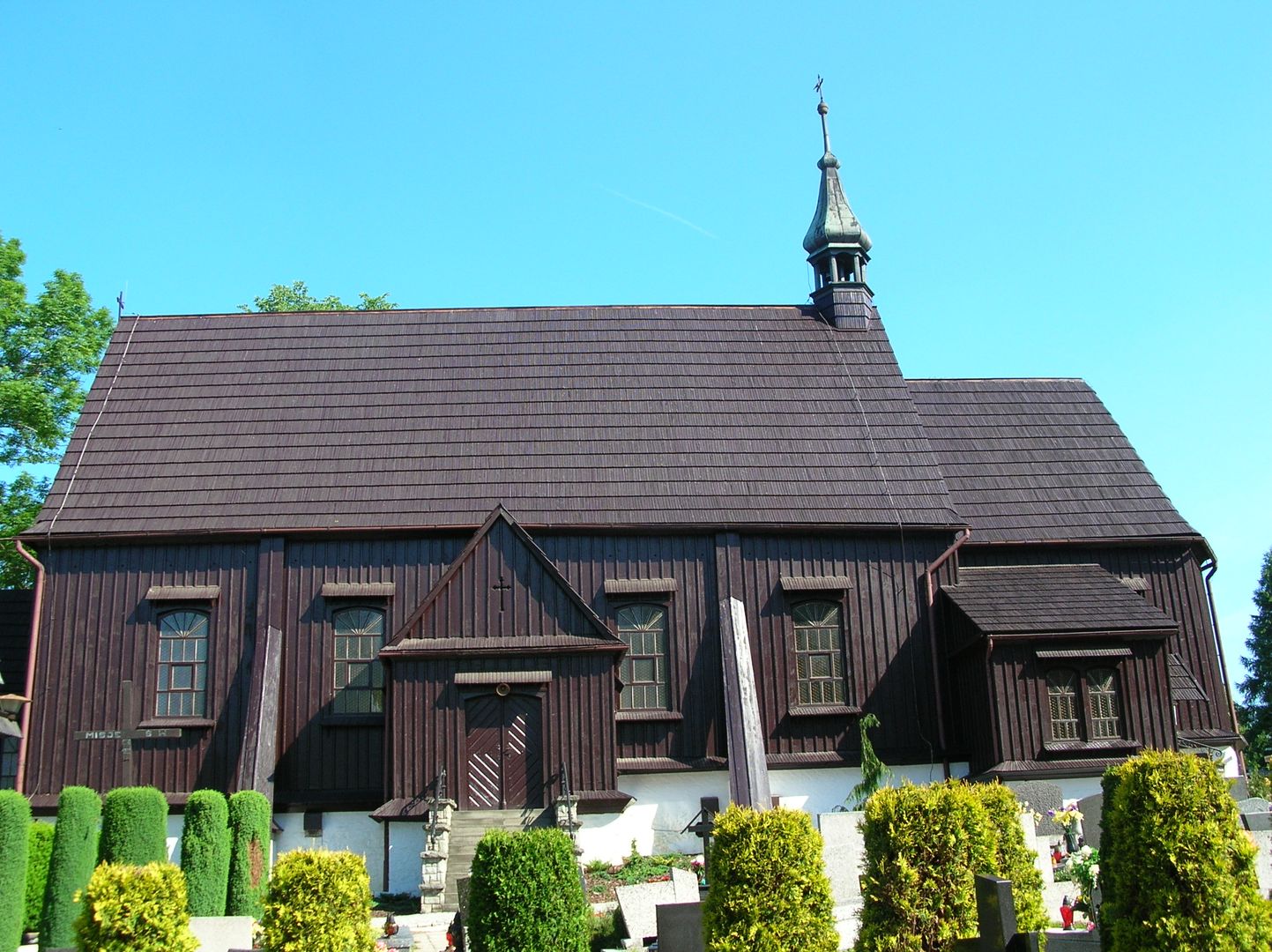St. Nicholas Church in Łąka
6.77

Overview
St. Nicholas Church in Łąka, Pszczyna Commune, is a historic monument located on the Wooden Architecture Trail of the Silesian Voivodeship, within the Pszczyna Loop. Its history dates back to 1449, when it was first mentioned. Over the years, it was in the hands of Protestants from 1570 to 1628, and in 1639 it was reclaimed by Catholics. The building burned down in 1658, after which a new church was erected in 1660. Unfortunately, over time, it underwent a series of transformations, leading to the loss of some of its historic features.
Architecturally, the church is oriented, wooden, with a log structure, set on a high masonry foundation built in 1814. The structure features a short, three-sided closed chancel, to which a sacristy and a brick chapel are attached. The nave has a rectangular shape and is characterized by two prominent vestibules. The exterior walls are clad with vertical boards, and the roof is covered with wood shingles. The reinforced walls of the nave are externally supported by diagonal braces. An interesting element is the hexagonal bell turret with a lantern, topped with an onion dome. The church has no tower, which is rare in the region, and next to it stands a separate wooden belfry.
The interior of the church is relatively modest, with plastered walls and contemporary polychrome. The dominant furnishings are Baroque and late Baroque elements, including crucifixes and liturgical vessels from the 18th century. St. Nicholas Church is not only a place of religious significance but also an important part of the cultural heritage of the region. Its architecture and history reflect the religious and social changes that took place in Poland over the past centuries, as well as showcase traditional construction techniques used in wooden sacral architecture. The site is eagerly visited by tourists and enthusiasts of history and architecture, making it a valuable attraction on the map of Silesia.
Location
Tickets
Powered by GetYourGuide
2025 Wizytor | All Rights Reserved